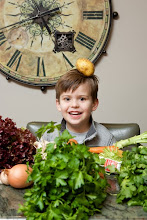In pagan culture, the egg signified the rebirth of the earth during spring. Christians adopted this symbol for the death and resurrection of Jesus Christ, allegedly having occurred in early spring. Eastern Christianity has created several myths regarding the connection between the egg and the Easter story, including a claim that Mary Magdalene brought eggs to share at the tomb of Jesus, which turned bright red when she saw that Christ had risen.
With all of these associations with life and the earth, it only makes sense that the eggs that we dye for our baskets, egg hunts and rolls be good for the earth and respect life. To do this, we need to be educated consumers and understand the labeling on the cartons.
Sustainable Eggs
Three separate certifying systems have been created by egg producers.
Certified Organic: This is the only certification that is regulated by the government. To earn it, a farmer must pass an inspection showing that the eggs came from hens that eat an antibiotic-free, 100% organic diet, and are allowed access to the outdoors and sunlight. What it does not require is a certain barn or shed size or limit on the amount chickens housed inside such facilities. It also does not require that the chickens spend any time outdoors and specifically allows a farmer to temporarily confine his hens for a variety of reasons, with no definition of the term "temporarily." It does, however, require certain humane limitations including that a bird must be anesthetized prior to de-beaking, a common practice in egg farming.
Certified Humane: This certification is regulated by Humane Farm Animal Care and is concerned less with what the birds eat than with how they are treated. Hens must eat a "wholesome" and "nutritious" diet, they may only receive antibiotics in the case of disease. The certification requires that the hens have "sufficient space, shelter and gentle handling to limit stress." In Illinois, Phil's Fresh Eggs has been Certified Humane under this system. To find other producers, visit Humane Farm Animal Care's website. Organic Valley may not be "Certified Humane," on its website, it states its promise to the consumer that its eggs have been:
"Produced on family farms in harmony with nature without antibiotics, synthetic hormones or pesticides. Our hens are raised humanely and given certified organic feed—never any animal by-products—and range freely outdoors."
A note on hormones: a hormone-free claim is a bit of a non-sequitur given that hormones are never given to hens being grown for laying eggs or during the egg-laying period unless sick.
The United Egg Producers Certification: This is quite a dodgy "certification." According to Marion Nestle, the certification "merely attests that a company gives food and water to its caged hens." Unsurprisingly, a large majority of industrial egg producers have received this certification. The website is chock full of double speak. On the home page, we see a wholesome young family on their bucolic farm. There is a large section called Myth v. Fact. My favorite myth v. fact is the first:
Myth: Farmers only care about profit.
Fact: U.S. egg farmers are committed to the humane and ethical treatment of animals. Many of the farms are family-owned and operated.
While I'm sure that majority of family farmers treat their hens humanely, having recently watched HBO's "Death on a Family Farm," family-owned and operated can not necessarily be equated with humane treatment.
A Note on De-beaking: It's important to note that none of the certifications prohibit de-beaking, though the Certified Organic and Humane standards do require that the birds be anaesthetized during the procedure. Birds are de-beaked to prevent the aggressive behavior that is almost inevitable in close quarters. In the "The Ethics of What We Eat
Sustainable Egg Dying
Ever since my son was born 5 years ago, we've coloring our eggs naturally. What we've done is to use the by-products of our home cooking that would otherwise be destined for the garbage or the compost bin. For example, yellow onion skins create a lovely beige shade, red, a purplish one. I'll blanch spinach, a traditional menu item on Maundy Thursday, for green. Boil some beets for red. Leftover coffee stains not your teeth for brown. The only virgin ingredients that I use are dried spices - really, how many of you are going to use up that entire jar or turmeric? I also have a huge jar of tomato powder that is past its prime (a donation from the very generous Spice House for a Purple Asparagus project) that when combined with vinegar turns up orange. When using spices, boil water to fill a bowl just large enough to hold an egg or two and add a tablespoon or more or the desired spice with a bit of vinegar. But my all time favorite natural egg dye? Red wine. Not only does it color the egg, but it gives it a sparkly sheen - I've always assumed that it's the sulfites. The best part? When your egg is done, it's cocktail time.
Devilled Eggs
Makes 12
12 large hard boiled eggs
2 tablespoons fresh tarragon, finely chopped
½ cup mayonnaise, either handmade or Hellman’s
1 tablespoon Dijon mustard
Kosher salt and freshly ground pepper to taste
Press the eggs through a fine-mesh sieve into a medium bowl. Gently mix in the remaining ingredients and season to taste with kosher salt and freshly ground pepper.
Makes 12
12 large hard boiled eggs
2 tablespoons fresh tarragon, finely chopped
½ cup mayonnaise, either handmade or Hellman’s
1 tablespoon Dijon mustard
Kosher salt and freshly ground pepper to taste
Press the eggs through a fine-mesh sieve into a medium bowl. Gently mix in the remaining ingredients and season to taste with kosher salt and freshly ground pepper.







Here's another certification to add to your list: www.foodalliance.org. Humane treatment for chickens (and other species), safe and fair working conditions, and environmental stewardship.
ReplyDelete